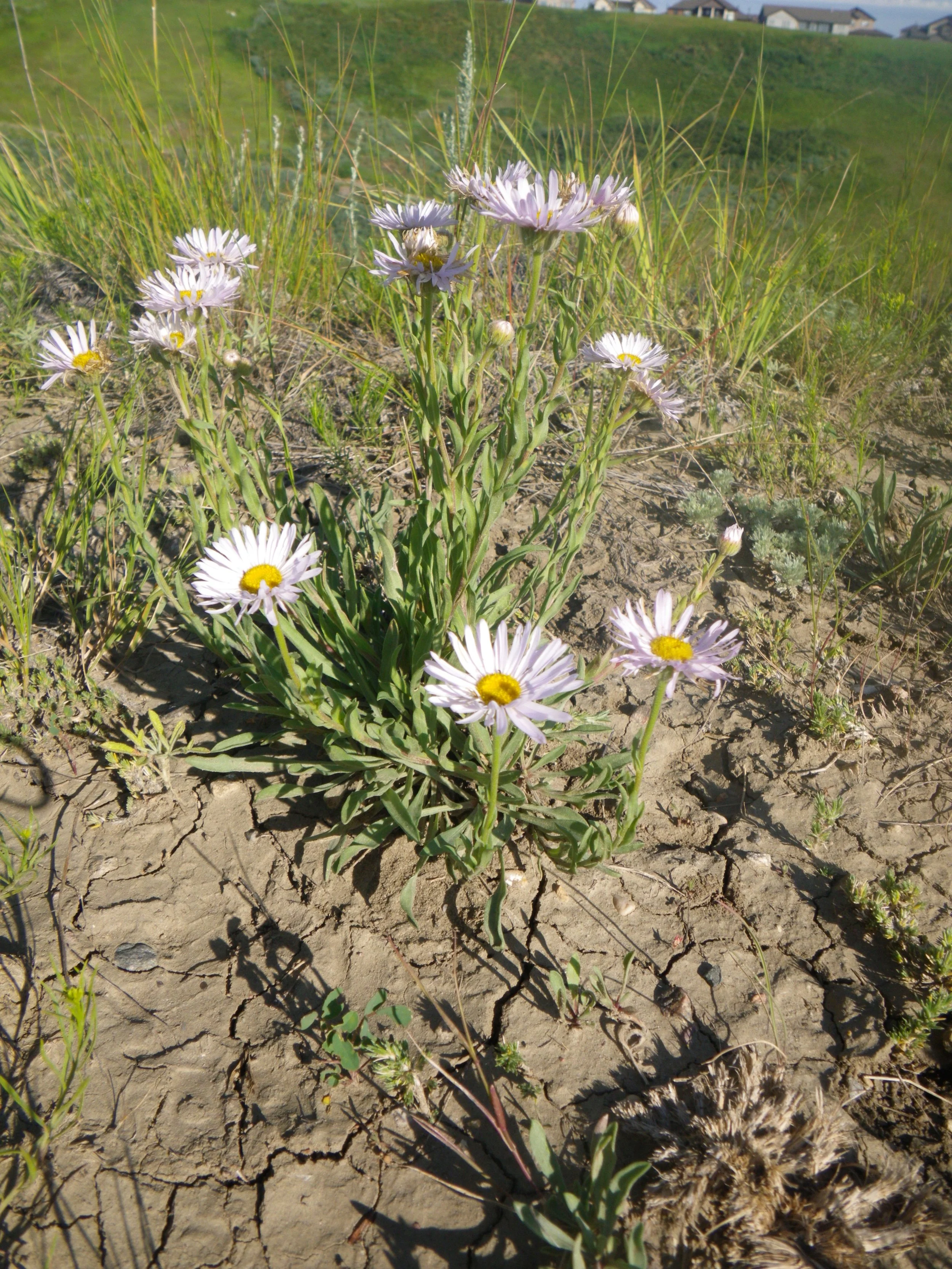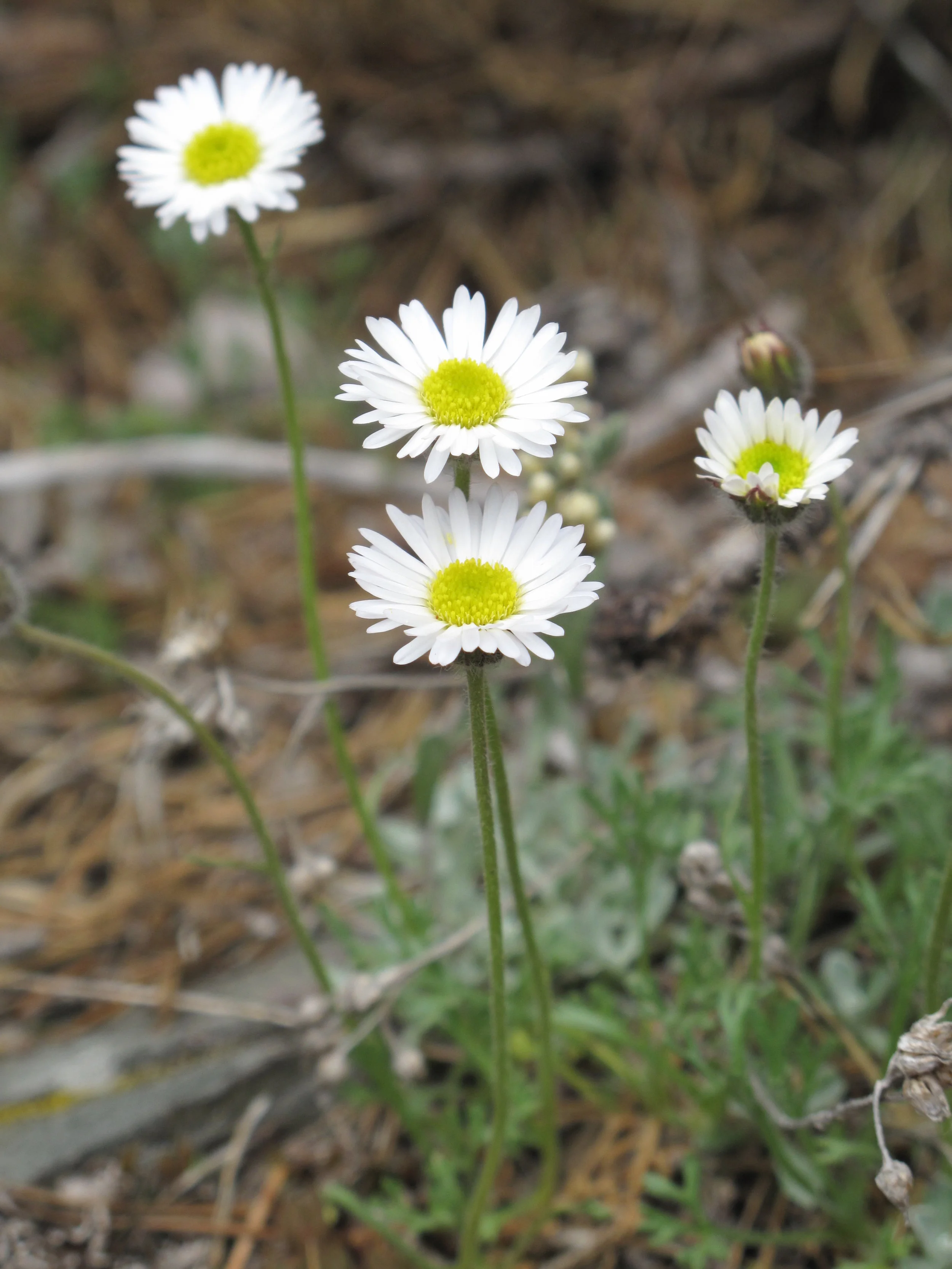On dry slopes, the cluster of pinkish white flowers nods at the end of a round stem 10–50 cm tall. When crushed, the leaves and stalks small strongly of onion.
Read MoreFound on the dry prairie, at 5–25 cm tall with white to pale pink flowers, the prairie onion is a small cousin to the nodding onion. The bulb’s mesh-like outer covering gave rise to its species name textile.
Read MoreThe leaves of the windflower look very similar to those of the prairie crocus, and both grow is the same habitat. The plant may be from 15–50 cm tall with solitary flowers that are usually white or pink and from 12–20 mm across.
Read MoreThe common name of this plant accurately describes the white blossoms; they feel soft and rounded like the pads of a kitten’s foot. The flowering stems, mostly less than 15 cm tall, grow out of the dense spreading mat of small grey leaves.
Read MoreCommon on the grasslands, this perennial has a woody base, but the new growth is soft and silky. Its silver grey foliage is very aromatic when handled. Growing 15–50 cm high, the stalks end with inconspicuous yellow flowers borne in loose racemes.
Read MoreShowy milkweed is well named: its purple-pink flowers are displayed near the end of tall stalks in round clusters 5–7 cm across, and a white sticky juice pours out if its stems or leaves are wounded. The dramatic seed pods are soft, large (7–10 cm) ovals that release seeds dispersed by the wind on long silky hairs.
Read MoreThis many stemmed plant may grow to 60 cm in height with several stalks per stem. The deep purple-blue flowers form a dense, narrow and blunt-topped mass at the top of each stem. The common name refers to the smooth seed pod that has two grooves on its top.
Read MoreThe 20–35 cm stems of ground plum sprawl across the dry grassland. Its leaves are composed of many leaflets that are smooth on top and hairy below. Typical sweet-pea type flowers are white with the keel, or bottom portion of the flower, having a purple tinge. The seeds are in distinctive, round pods 15–25 mm across
Read MoreThis plant has many stems 30–60 cm high, and each produces three or four stalks of drooping white flowers about 2 cm long. The dark grey-green leaflets number 25–30 per leaf, and are densely hairy on the bottom, but smooth on top.
Read MoreThe leaves of this mat-forming plant are a distinguishing feature—they are compound, with three leaflets, like a clover. The leaves are clustered thickly around the base of short-stemmed white flowers, partially obscuring the pea-shaped blossoms.
Read MoreThis erect or spreading perennial with its grey-green leaves may be up to 40 cm tall. Its round cluster of flowers can be white or pale reddish to purple.
Read MoreThis plant has several stems that grow from one clump. The stems may be 30–40 cm long, but they are partly lodged, and reach upward about 15–20 cm. The cream-white flowers form clusters at the end of the stalks. The leaves of this milk-vetch are distinctive—they are numerous, narrow linear leaflets 2–6 cm long.
Read MoreWith a nodding, bell-shaped blue blossom at the end of a slender stem, typically 20–35 cm tall, the harebell blooms in July and August. It grows on grassy slopes and open areas. One of over two hundred and fifty Campanula species worldwide, this particular one is the famous “bluebell of Scotland”.
Read MoreAccording to Wilkinson, some First Nations people ate the raw berry, and children sucked the nectar from the flowers. (48) However, the fruit may cause nausea.
Read MoreThis inhabitant of the dry prairie forms spiny cushions 3–20 cm across. It can produce flowers when the plant is so small that its blossom is bigger than it is. Flowers are purple- red, and 3–5 cm across. In fall the ripe fruit becomes sweet and juicy and reminiscent of kiwi.
Read MoreThis low growing, often prostrate, plant has narrow leaves, and dense, cylindrical flower spikes at the end of the flowering stalks.
Read MoreThis low growing plant has narrow leaves, and dense, cylindrical flower spikes at the end of the flowering stalks.
Read MoreThis deep-rooted perennial forms small tufts, or clumps, of basal grey-green leaves and many stems 10–30 cm tall. The flower heads, one to three or four per stem, are 2–3 cm across with many (up to one hundred) narrow, white ray florets that look like thin petals around a yellow centre.
Read MoreThe flowers of this small plant are very similar to those of the tufted fleabane (Erigeron caespitosus), but sometimes the blossoms have just the yellow central disk florets without the white ray florets. Also this plant is usually shorter, being only 5–15 cm tall. The distinctive feature of compound fleabane is its finely divided leaves.
Read MoreLook for small white blossoms, later bright red fruit, on runners that spread across the ground. They grow best in gravely soil. The scientific name Fragaria means fragrant, and refers to the smell of the ripe fruit. Anyone who has eaten the small red berries knows the wild fruit is delicious, with much more flavour than domestic fruit.
Read More















